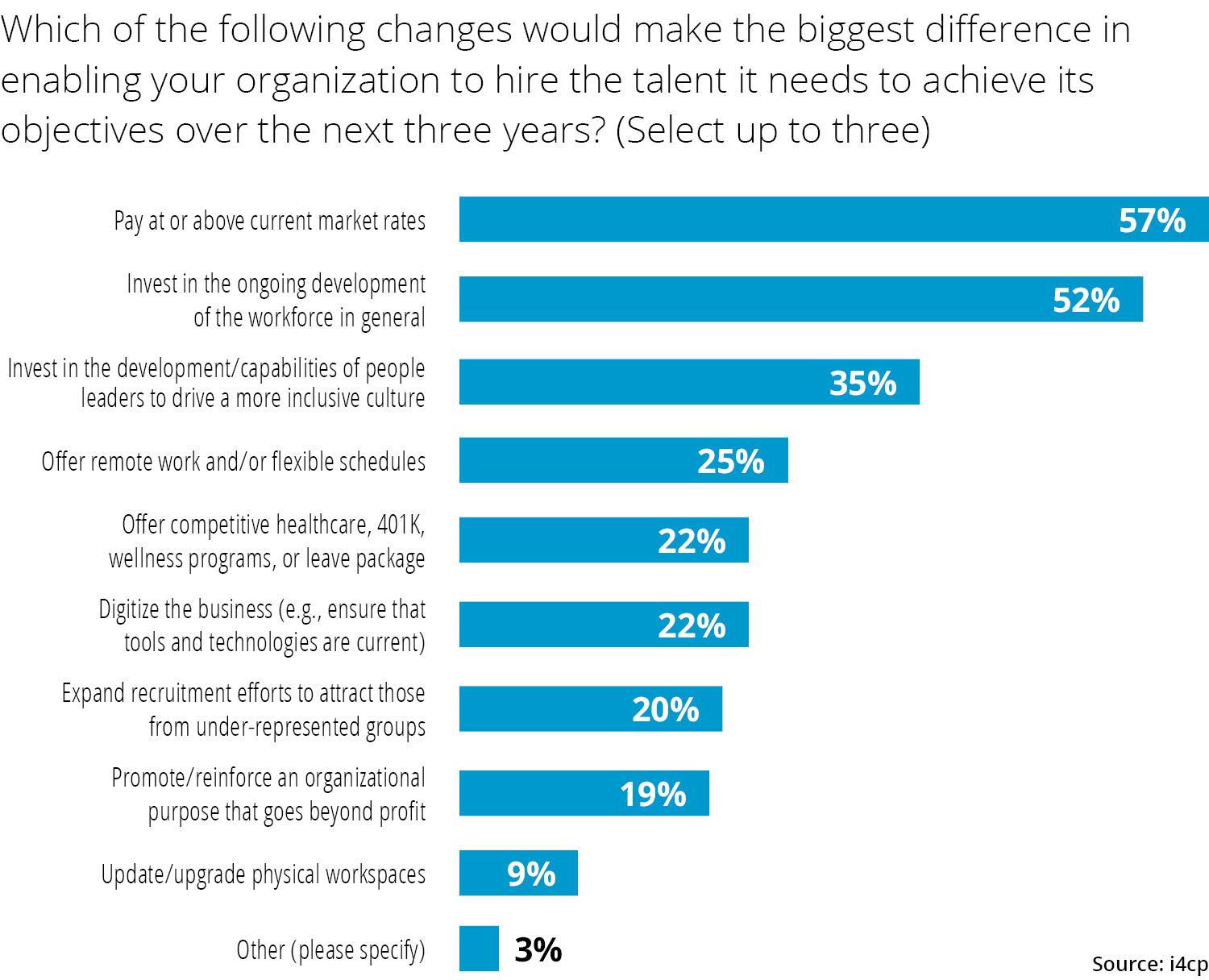What HR Believes Must Change to Make Their Organizations Competitive

The Institute for Corporate Productivity (i4cp) regularly fields pulse surveys to query respondents about the practices currently in use in their companies and what’s planned for the future.
On occasion, we ask survey respondents to tell us what they believe should be happening in their organizations. These responses are both validating and illuminating; the survey we fielded last week in advance of Labor Day was no exception.
Our pre-Labor Day survey, which gathered responses from nearly 550 professionals (91% of whom work in the HR function) asked respondents to tell us about the factors they believe are challenging their organizations to attract and hire the talent they need to achieve their strategic objectives both now and looking three years ahead.
Not surprisingly, the top challenges cited were a combination of workforce skill-level and readiness and compensation and benefits. Most noted lack of candidates with the skills required as their organization’s number-one challenge, followed by compensation (“we are unable/unwilling to pay as much as some competitors”) and readiness (“not enough people with both the credentials and real-world experience needed for the roles”).

When we looked closer at the data to identify differences in responses from those representing high-performance organizations (HPOs) and their lower-performing counterparts (LPOs), we noticed that among HPOs, the challenge identified most commonly is finding the right talent. Among LPOs, the most common challenges cited are connected to the organization’s employer brand and compensation competitiveness.
Another point: those from HPOs are almost 3x more likely to report challenges finding talent from underrepresented groups. This is likely because HPOs are more focused on this issue as a strategic business imperative than LPOs; those from HPOs are also 2.5x more likely to say expanding recruitment among underrepresented groups could help them meet their organization's talent needs over the next three years.
What needs to change? One word: Investment
When we asked HR professionals to tell us about the changes their organizations could make that in their opinion would make the biggest difference in their ability to hire the talent they need, it came down to one thing: money. Well over half (57%) overall said they believe their organizations need to pay at or above the current market rates.
Moving the needle by increasing compensation was followed by investment in the ongoing development of their workforces, and in developing their leaders to drive a more inclusive culture—a clear connection to our 2019 study, Culture Renovation: A Blueprint for Action, which identified several leadership behaviors that help enable a healthy, inclusive culture.

HPOs are also more likely to prioritize upskilling their workers, moving talent around the organization (which provides dividends well beyond gaining new skills, such as enabling them to expand their networks), focusing on underutilized talent, and expanding flex work. Those from LPOs recognize that they need to try to catch up in terms of improving their employer brand and redesigning job roles/requirements.
Clearly, HR leaders know that investment in compensation and benefits as well as offering flexibility in how and where work gets done will help woo more of the talent everyone needs. And investing in ongoing development is key to ensuring that the culture is inclusive, nurtures talent, and is better positioned to hang onto talent longer. The data keeps pointing to the same things. Are we listening?





